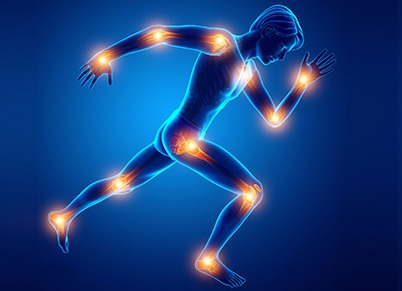CJ Attard Insights
Exploring the latest trends and insights in various industries.
Joint Pain? Let's Get to the Root of Your Discomfort!
Unlock the secrets to alleviating joint pain—discover the root causes and effective solutions to reclaim your comfort and mobility today!
Understanding Joint Pain: Causes and Treatment Options
Understanding joint pain is crucial for managing and alleviating discomfort. Joint pain can arise from various causes, including arthritis, injuries, and overuse. Common types of arthritis such as osteoarthritis and rheumatoid arthritis can lead to significant pain and swelling. In addition, conditions like bursitis and tendinitis may also contribute to joint discomfort. Genetics, age, and lifestyle factors, such as obesity and a lack of exercise, can further exacerbate these issues. Proper diagnosis by a healthcare professional is vital to determine the underlying cause of joint pain and initiate appropriate treatment.
Treatment options for joint pain vary widely depending on the underlying cause. Some common approaches include medications like nonsteroidal anti-inflammatory drugs (NSAIDs) and corticosteroids to reduce inflammation and relieve pain. Physical therapy can also play a crucial role in strengthening the surrounding muscles and improving joint function. In severe cases, surgical interventions such as arthroscopy or joint replacement may be necessary. Additionally, alternative therapies like acupuncture, massage, and dietary adjustments may offer supplemental relief. Overall, a comprehensive approach to joint pain management is essential for improving quality of life and maintaining mobility.

Is Your Joint Pain Linked to Lifestyle Choices?
Joint pain is a common affliction that can significantly impact your daily life, and many people may not realize that their lifestyle choices play a crucial role in its development. Factors such as obesity, sedentary behavior, and poor nutrition can contribute to increased wear and tear on the joints, leading to chronic discomfort. For instance, being overweight puts extra stress on weight-bearing joints like the knees and hips, which can worsen joint pain over time. Additionally, a lack of physical activity can result in weakened muscles and ligaments, further exacerbating joint issues.
Beyond weight and activity levels, other lifestyle choices, such as smoking and excessive alcohol consumption, can also have a detrimental effect on joint health. Smoking decreases blood flow to the bones and may contribute to inflammation, while excessive alcohol can interfere with the body’s ability to absorb essential nutrients that support joint function. By making informed decisions regarding your lifestyle, such as adopting a balanced diet rich in anti-inflammatory foods and incorporating regular exercise, you can potentially reduce the risk and severity of joint pain in the long run.
Top 5 Myths About Joint Pain Debunked
Joint pain is a common issue that many people experience, yet numerous myths surround it, leading to confusion and misunderstanding. One prevalent myth is that joint pain only affects the elderly. In reality, this condition can impact individuals of all ages, including young athletes and those with specific health conditions. Additionally, some believe that joint pain is an inevitable part of aging. While it is true that the risk increases with age, lifestyle factors such as diet, exercise, and weight management play significant roles in joint health.
Another misconception is that exercise worsens joint pain. On the contrary, regular, low-impact exercise can strengthen the muscles around the joints and enhance flexibility, often reducing discomfort. Many people also think that they should avoid physical activity to prevent further damage; however, staying active is crucial for maintaining joint function. Lastly, some believe that over-the-counter pain relievers are a permanent solution to joint pain, which can lead to dependency. It's essential to consult with a healthcare professional to find the most effective, holistic approach to managing this condition.